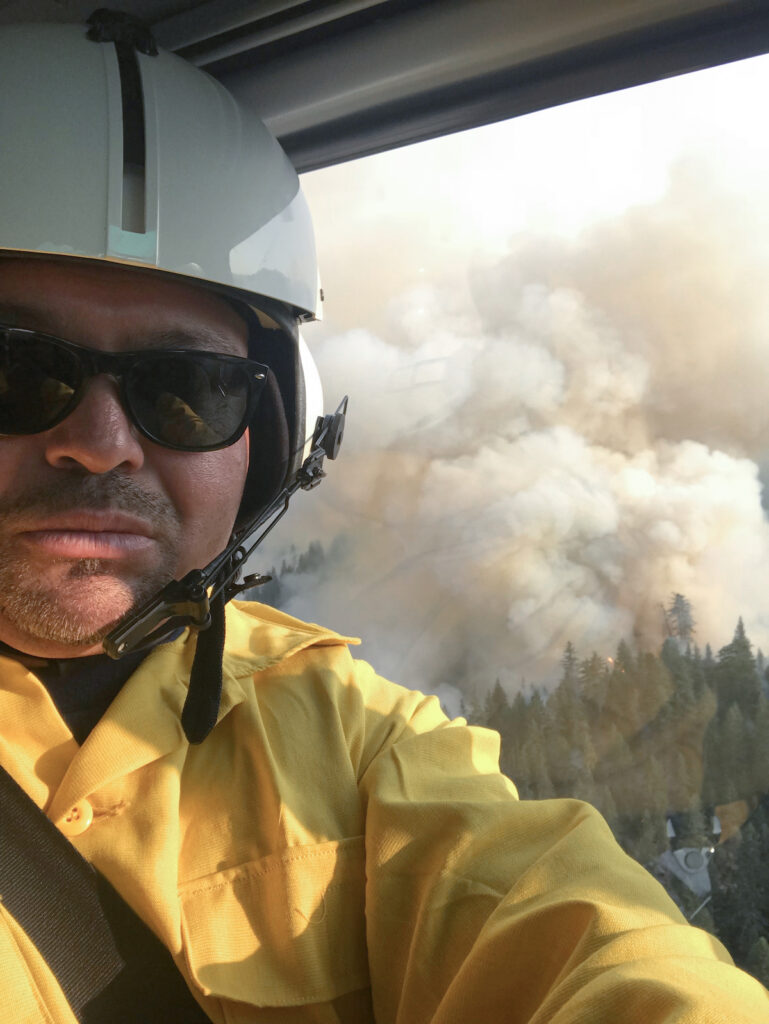
Fall 2022 ForestLife
PFT is honored to work with Merv in both Oregon, where PFT’s conservation of private working forests adjacent to the Rogue Siskiyou extends conserved corridors, and in California, where we have benefitted greatly from his guidance on cultural fire management. A graduate of Humboldt State University with a degree in Native American Studies, Merv was elected to the Hoopa Tribal Council at the age of 22. He became its youngest Tribal Chair at 24, leading a government of 500 employees and testifying to Congress on fisheries issues. Merv is the first native American to be named Forest Supervisor in the Pacific Southwest and Pacific Northwest Regions.
We recently had a conversation with Merv—here are some highlights:
Merv, you’ve spent your life building bridges between communities. What’s your secret?
When I was little, my dad was laid off by the mill in Hoopa and we all moved to Eureka, where he began a career with the Public Works Department. I had an unusual dual upbringing, going to school in Eureka and weekends surrounded by family and friends in Hoopa. I learned early on to be an ambassador from Indian country and a convenor of my friends, native and non-native, together. It’s so amazing how much those skill sets come in to play even today as a Forest Supervisor, as I’m very comfortable in so many communities.
How did you come to work at the Forest Service?
As tribal chair doing federal consultations, I saw there were no native cultural practitioners working within these agencies that had all this trust and responsibility to help tribal people with their ancestral territories and resources, like fisheries and water. Try to remember the last time you went in a room and didn’t see anyone who looked like you or thought like you. That is an everyday occurrence for those of us from Indian country. I made it a goal to find a place within the US Forest Service since it had so much influence on the ancestral territories of indigenous people. There was clearly a gap to fill. I became the first tribal relations program manager for the PSW Region, with Randy Moore as my boss.
What worries you about forests in this time of climate change?
We aren’t acting fast enough, and we’re being too simple. Forest loss is a big problem for climate change, and planting trees is not enough to solve the problem. We need a more comprehensive approach. Not enough people know about forests and climate change, so they don’t necessarily think about them as a solution. While forests may seem far away to many people who live in cities, how we manage and conserve those forests impacts their daily lives—providing water, preventing bad fires…PFT’s work is essential to helping people understand and support a new approach.
I believe the Creator has a path for all of us, but sometimes we need to be outside our comfort zone to find that path. When I accepted that first job working in Vallejo, it was the first time I ever lived more than 60 miles from Hoopa. I was totally out of my element. I was terrified, but I walked in the door. I hope I am paving the way for other indigenous people.
What direction should USFS be taking in forest management?
USFS’s job for its first 80 years was timber extraction, which led to wholesale fire suppression, and, for tribal people, that was very frustrating. Everything you need as a human being is in the woods: It’s where your water comes from. It’s where your food sources come from. It’s where your prayer sites are. It’s where your medicinals and herbs are. It’s where your travel corridors are and your recreation. To a tribal person, the forest is everything.
USFS went from being focused on single resource extraction and then, in one leap, shifted to single resource protection. I wholeheartedly believe that the wildfires we are seeing right now are not only the result of fire suppression. Another contributor to the fuel loading we have now is the single focus of protection over the last 30 years. To the tribal community, both approaches are extremes. The path you want is in the middle. That’s where I feel I can be of service.
Let me say that not all fires are good, and not all fires are bad. In order to get where we need to be, we need to find the middle ground. What I’m bringing to the table is working with different communities and finding that ground. If we want to reduce catastrophic fires and protect threatened species, we need to protect the resources for all life forms.
What can non-natives learn from indigenous forest management?
Traditional ecological knowledge is about preserving those things you need to survive—water, food, travel corridors. If the forest burns up so badly that when rain comes, it erodes badly, that’s not good for the fish or the people. You’ll starve. There are many things in traditional ecological knowledge that are just common sense if you live in a forest and have been managing it for millennia.
The problem is that most people don’t live in and depend on forests anymore. They see it as a luxury rather than survival, which creates a lot of challenges and conflicts because people value different things. But in the last decade I really sense a sincere effort from people to learn some truths regardless of how inconvenient they may be. It’s a cultural re-awakening. I am impressed, humbled, and excited to see the number of non-native people wanting to learn from tribes and help. So, we’re moving in the right direction—toward achieving both social and environmental justice. A key challenge is managing fire to achieve both people’s safety and ecological outcomes.


